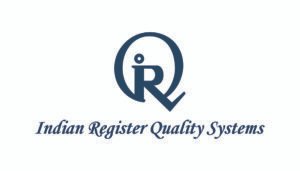Tag: FSSC 22000 6.0 version

Understanding FSSC 22000 Version 6: What’s New and What’s Changed?
FSSC 22000 is a globally recognized certification scheme. FSSC 2200 ensures the safety and quality of food-based products. The newest version of FSSC 22000 comprises the sixth version. It was published in April 2023. One can obtain a 12-month transition period between 1st April 2023 and 31st March 2024. The transition is vital to abide by. Why? Because after 31st March 2024, no audits could be conducted by following the 5.1. version of FSSC 22000 certification. The latest version of the certification exhibits significant changes and all these impact food production companies. Review the prime transition areas and ensure the best solution. Changes in the food chain category FSSC 22000 version 6 has introduced effective changes to food chain categories. The food chain subcategories were based on the ISO22003-1 accreditation program. The categories met the Global Food Safety Initiative (GFSI) requirements. But things have evolved. FSSC version 6 has introduced two categories – The pet food production categories have also been revised and eliminated. Pet food is part of the C and D categories. The latest addition of e-commerce could be seen in the category FI. Introducing detailed clauses – Know them rightly. The additional norms and requirements of FSSC version 6 include the following – Audit times – The change in accreditation The various changes in the accreditation document ISO 22003-1 make a remarkable impact. One can spot additional requirements related to the audit time for FSSC 22000. In fact, the audit time will increase for many organizations. In contrast, enterprises that undergo integrated audits with management systems or food safety systems can experience a reduction in audit time. Follow up on non-major conformities. FSSC 2200 version 6 defines the prime non-conformities, and these need to be enclosed by the certification body (CB) within a span of 28 calendar days. The days get counted from the last day of the audit. A Corrective Action Plan or CAP can also deliver temporary measures and ensure optimal monitoring solutions to mitigate the risks. The temporary changes are critical until permanent corrective action can be implemented. Additional audit documentation and certificates FSSC 22000 version 6 also necessitates the active role of a representative of the company and an experienced auditor to meet the needs. They help complete the attendance register. It is a critical document and contains information related to the start and end time of the audit with the break times. In addition, an integrity declaration is vital to manage by a senior representative of the company throughout the audit. Communication requirements – A new section It is a new section introduced in the 6th version of FSSC. The certification body must be informed within three days of an event that may impact food safety, legality, and the certification integrity. It can include force majeure, natural and human-made disasters like – war, crime, flood, earthquake, strike, terrorism, crime, flood, earthquake, malicious computer hacking, etc. Also, it includes critical situations where the certification integrity is at stake. FSSC is essential to prevent disrepute, recalls, withdrawals, disasters, and food safety outbreaks. The FSSC certification body needs to be informed within a span of three days. It is applicable to regulatory authorities and food safety issues. In many cases, there may be additional monitoring requirements, enforcing production shutdown. The FSSC norms are apt for food safety-related legal proceedings, trials, malpractices, and fraudulent activities. Equipment management – A new chapter Equipment specification and management are integral aspects. Companies need to follow FSSC compliance and regulatory norms for addressing hygienic design. The compliance norms help you navigate the hassles of legal and customer requirements. Ensure the best utility and functionality for equipment and ease the management steps conveniently. The supplier must offer accurate details and specifications before proceeding with the equipment installation. It helps avoid the risks, ensuring optimal quality. With the evolved management techniques, enjoy the benefits of adequate equipment control measures for production. Enhanced and updated norms for quality control Quality control exhibits a systematic procedure. It includes various aspects like the establishment, implementation, and maintenance of quality norms. The QMS also focuses on the finished product specifications and product release steps. Additionally, one can obtain an analytical overview of the quality control parameters that shall be carried out and used as input for the management review. The quality control procedure is included in internal audits, enhancing the overall attributes of the products. Quantity control techniques are dynamic and can vary based on legal and customer requirements. These are also included in the new chapter. Besides these, the establishing and implementing line start-up and change-over procedures have been added to the new chapter. It focuses on the dynamic controlling measures related to product labelling and packaging. Ensure better food safety and quality. Before the new changes in the certification framework, the focus was exclusively on food safety culture. It had to be implemented aptly and was part of FSSC 22000. The new version delivers a comprehensive solution by adding a new chapter with additional requirements. It covers everything essential for quality culture. It exhibits the commitment of an organization and helps cultivate optimal food safety and quality. The diverse aspects to consider in food safety and quality culture include – Ensure a well-documented food safety and quality culture plan with better-defined targets and deadlines for continuous improvement and optimal management. Summing up The main changes in the FSSC 22000 version 6 include – Ensure an efficient transition by realizing the new changes and critical aspects of the latest version of FSSC 22000. Image by Freepik
Search
Useful Links
Recent Posts

ISO 50001 Internal Auditor Training: Master Energy Compliance & Savings

SOC 2 Report: A Strategic Guide to Compliance & Competitive Edge



